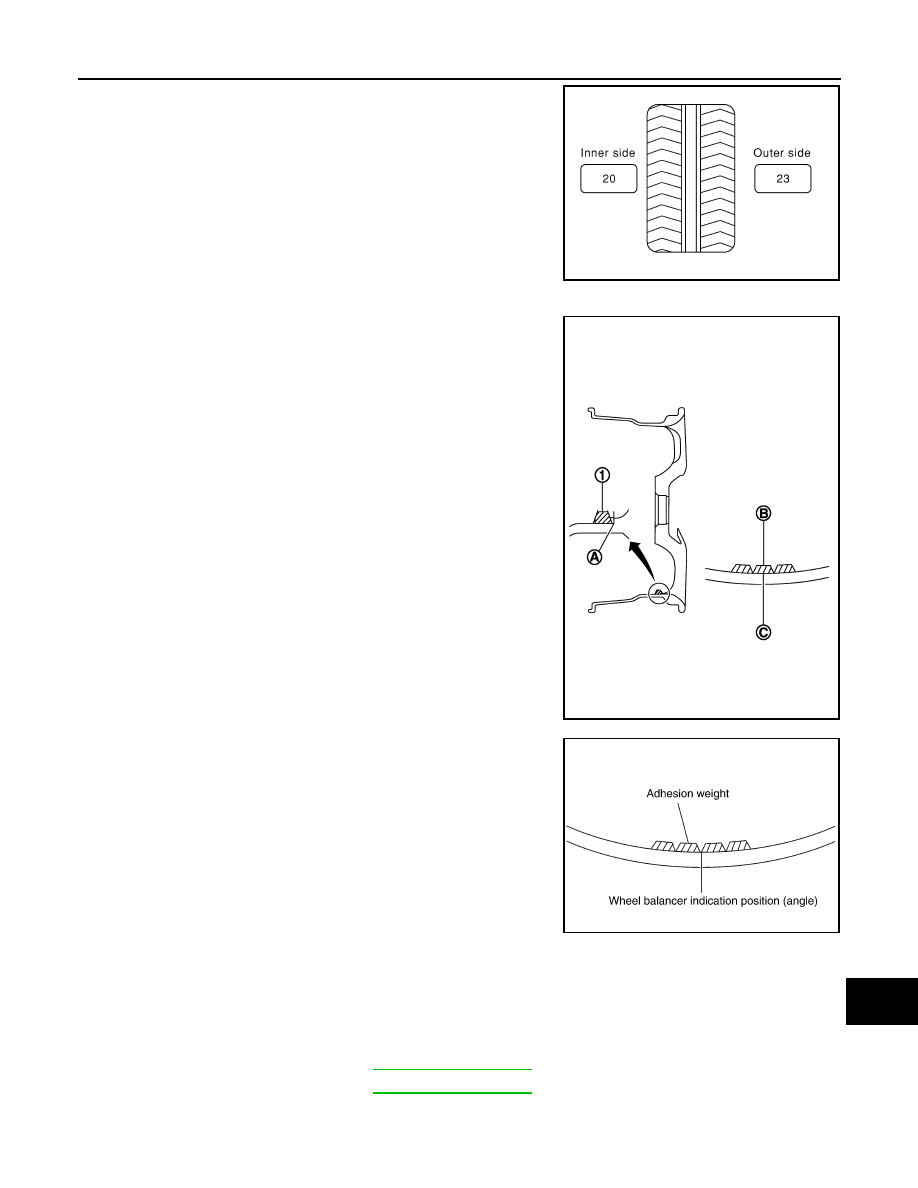Infiniti QX56 (Z62). Manual - part 925

CHASSIS MAINTENANCE
MA-27
< PERIODIC MAINTENANCE >
C
D
E
F
G
H
I
J
K
L
M
B
MA
N
O
A
a.
Indicated unbalance value
×
5/3 = balance weight to be installed
Calculation example:
23 g (0.81 oz)
×
5/3 = 38.33 g (1.35 oz)
⇒
37.5 g (1.32 oz) bal-
ance weight (closer to calculated balance weight value)
NOTE:
Note that balance weight value must be closer to the calculated
balance weight value.
Example:
36.2
⇒
35 g (1.23 oz)
36.3
⇒
37.5 g (1.32 oz)
b.
Installed balance weight in the position.
• When installing balance weight (1) to road wheels, set it into
the grooved area (A) on the inner wall of the road wheel as
shown in the figure so that the balance weight center (B) is
aligned with the tire balance machine indication position
(angle) (C).
CAUTION:
• Always use genuine NISSAN adhesion balance weights.
• Balance weights are non-reusable; always replace with
new ones.
• Never install more than four sheets of balance weight.
c.
If calculated balance weight value exceeds 50 g (1.76 oz), install
two balance weight sheets in line with each other as shown in
the figure.
CAUTION:
Never install one balance weight sheet on top of another.
3.
Start the tire balance machine again.
4.
Install drive-in balance weight on inner side of road wheel in the
tire balance machine indication position (angle).
CAUTION:
Never install more than two balance weight.
5.
Start the tire balance machine. Check that the inner and outer
residual unbalance value is within the allowable unbalance
value.
CAUTION:
If either residual unbalance value exceeds limit, repeat installation procedures.
BRAKE FLUID LEVEL AND LEAKS
SMA054D
JPEIC0040ZZ
Allowable unbalance value
Dynamic (At flange)
: Refer to
.
Static (At flange)
: Refer to
.
PEIA0033E